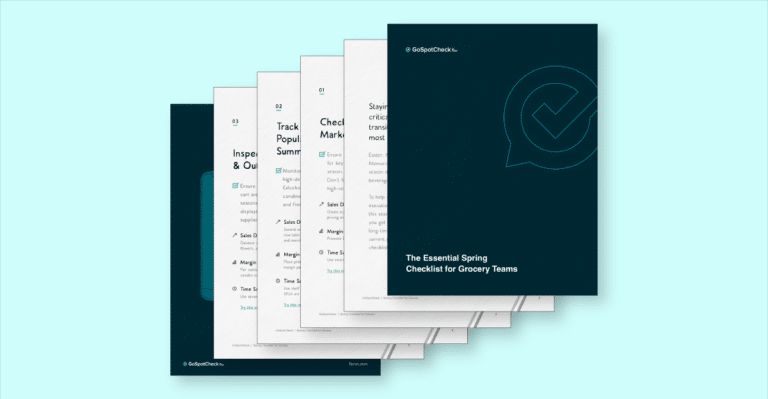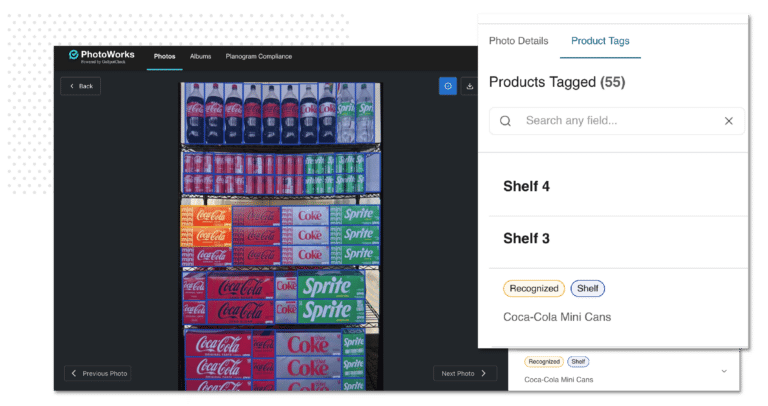In today’s consumer-driven market, it’s not enough to serve great food at affordable prices. The way a guest feels about your brand and their most recent visit is what keeps them coming back. While the quality of your food, the value of your menu, and the amenities you provide are essential, they’re just small parts of the overall brand experience.
The brand experience has to be distilled into a quantitative value before you can do anything about it. You’re probably already gathering customer feedback, assessing standards across your locations, and making adjustments when issues crop up. However, optimizing the way your workforce collects observable data and how you implement it at a macro level can make a world of difference.
We put together five easy-to-implement steps that will help you improve your brand experience with smarter, more effective audits.
1. Integrate brand audits with your other processes
Don’t isolate brand audits from your other systems or processes. If you force audit results through lengthy email chains or disconnected software, you’ll constantly be catching up with last year’s problems. Act on results as soon as possible, and don’t let archaic paper filing systems or arcane spreadsheets hold you back.
When an auditor finds a red-flag issue, make it a building block in a subsequent action plan. If it’s possible for the local manager to make on-the-spot corrections, incorporate that step into your process. This gives your brand expert, the auditor, the opportunity to provide clarifications, reference data, and hands-on guidance.
One way to ensure your action plans are effective is by creating workflows that automatically match low scores and critical issues with follow-up tasks and the responsible supervisors. Instead of double-entering data or forcing workers to wait for a job assignment, set up forms that trigger tasks, send notifications, and generate action plans directly from the audit results.
2. Incorporate customer feedback into your KPIs
Many companies leverage customer surveys to gauge satisfaction as a numerical value. Restaurant organizations often use these values as performance metrics individual locations by setting a target value. In theory, each restaurant follows the brand guidelines to meet the score’s threshold.
Unfortunately, this metric looks better on paper than in practice. The information that you get from customers is spotty, unreliable, and subject. Analyst Esteban Kolsky of ThinkJar.net estimates that only 1 in 26 customers will actually complain about a negative experience. The rest, he proposes, just leave.
Instead of using a numerical score as a threshold for success, focus on reducing negative trends. Instead of only looking at overall satisfaction, filter and aggregate customer responses by what made them unhappy. For example, if a substantial number of customers report getting the wrong order, replace your KPI of “retain a satisfaction score of 96 or higher” with one such as “serve fewer than 3% incorrect orders.”
3. Compare brand experience across all locations
Aggregate and analyze observational data from brand audits to gather high-level data about regional trends. Analyzing your auditing data gives you the ability to gauge the effectiveness of new initiatives or trace the origin of emerging patterns. This is especially helpful for determining which locations need additional attention, like brand training and follow-up audits.
On a local level, if a few restaurants are lagging, you can use historical data to determine when the trend started, compare that event to other metrics within the same time frame, and track down the root cause. This process can also help you adjust for variables outside your brand’s control, like an economic downturn, increased competition in a region, or negative press coverage.
Ultimately, the quality of your analysis comes down to the tools you use. If your analysis relies on complex spreadsheets, you’ll spend more time maintaining and repairing the analytics than uncovering critical insights. Instead, use flexible dashboards that suit your unique process, scoring, and KPIs.
4. Optimize your brand audits with automated forms
One of the most effective ways for improving your brand experience is optimizing the way you gather observational data in your audits. Spreadsheets, paper forms, and double entry can get the job done, but they lag behind mobile forms when it comes to communication, efficiency, and ease of use.
All three of these methods introduce what we call “the human element.” Although personal interaction can be a critical part of creating a great customer experience, it’s a confounding factor in obtaining reliable information. The fewer decisions, data fields, and reference materials a worker has to deal with at any given time, the more likely they are to provide consistent results.
Eliminating the human element is especially helpful for brands who use unique, custom scoring systems. If you need to use complex formulas to calculate a score and determine next steps, trusting your calculations with a sprawling spreadmart can be a huge hassle. Unlike spreadsheets, automated forms don’t require regular maintenance or specialized knowledge to change, and they can be customized for virtually any manual process.
5. Assess your brand audit process regularly
Don’t assume your audits are going off without a hitch. If you don’t “audit your audits” occasionally, they’ll inevitably lose touch with the rest of your organization’s process. Just like in step one, integrating your audits with the other processes in your organization is vital to maintain consistency and cognizance of your brand’s vision.
Of course, you don’t need to create a separate team of auditors just to investigate your brand evaluations. There are many convenient ways to understand how well your auditing initiatives are working. For example, you can survey your auditing employees and the employees being audited:
- Do they have the tools they need to do their jobs well?
- Do they think that the KPIs you’ve set are achievable?
- Are they adequately trained or do they have access to training?
- Are the forms you use up-to-date with your current branding?
Take the time to revise, test, and gather feedback about changes to the auditing process. Give the leaders of your brand experience team enough say to make an impact. If your brand audits don’t reflect the universe surrounding your business, your data won’t be as rich, actionable, or meaningful as it could be.
The next steps toward improvement
At Form.com, many of the restaurant organizations we help already have a system for auditing their brand experience. However, these evaluations are often handled with paper, spreadsheets, and inflexible form software. While these options are better than ignoring quantitative brand data, using them can feel like taking three steps forward and two steps back.
We specialize in mapping workflows, integrating complex data solutions, and digitizing paper- and spreadsheet-based forms. If you’d like to learn more about how Form.com can help your restaurant organization improve and automate audits get in touch with a solutions expert to set up a live demo today.




